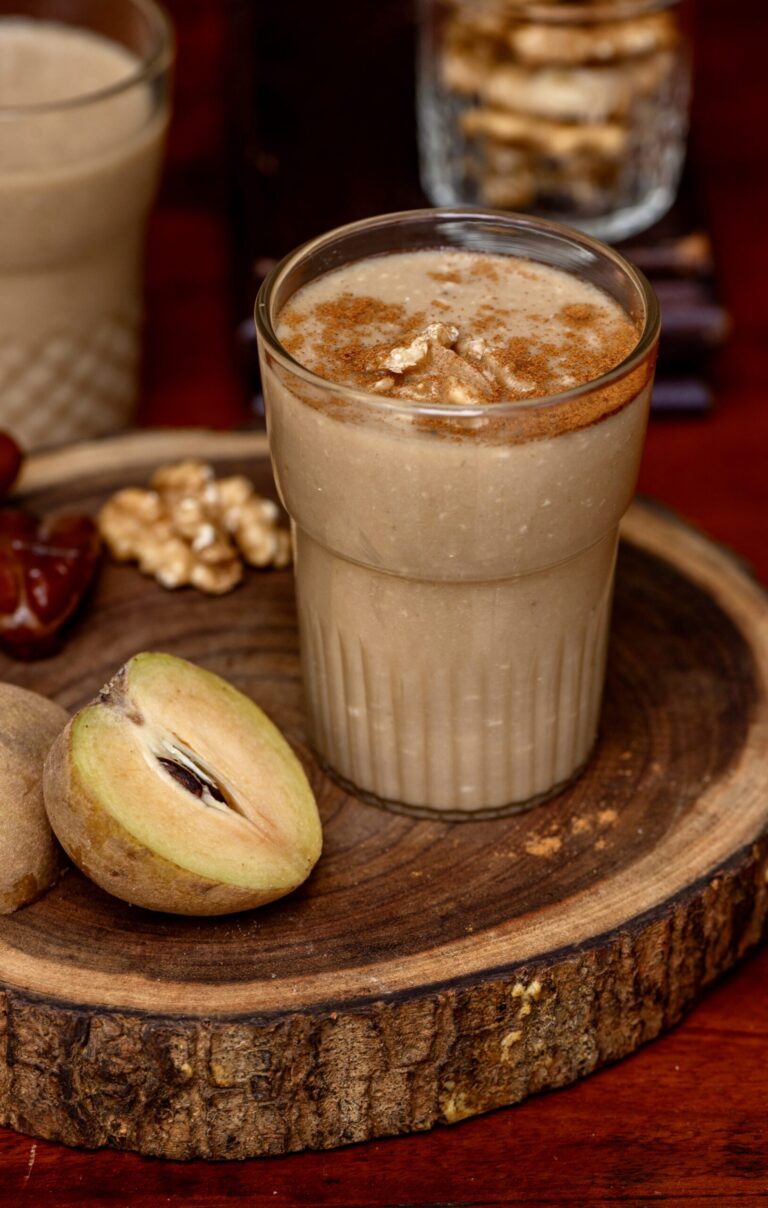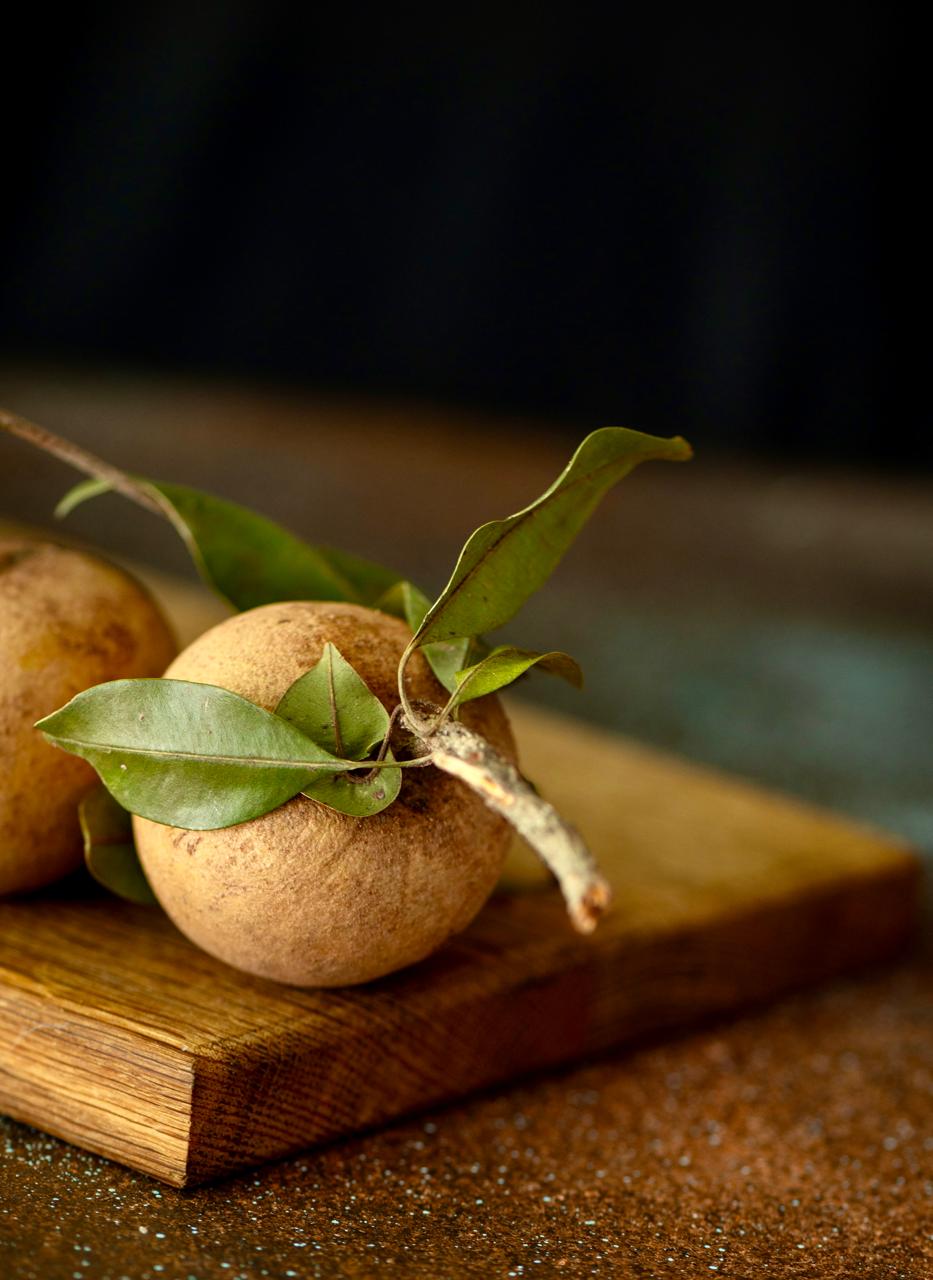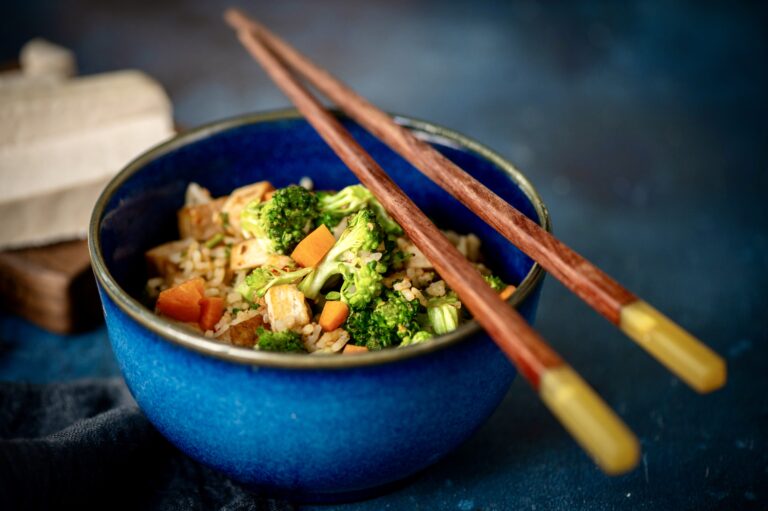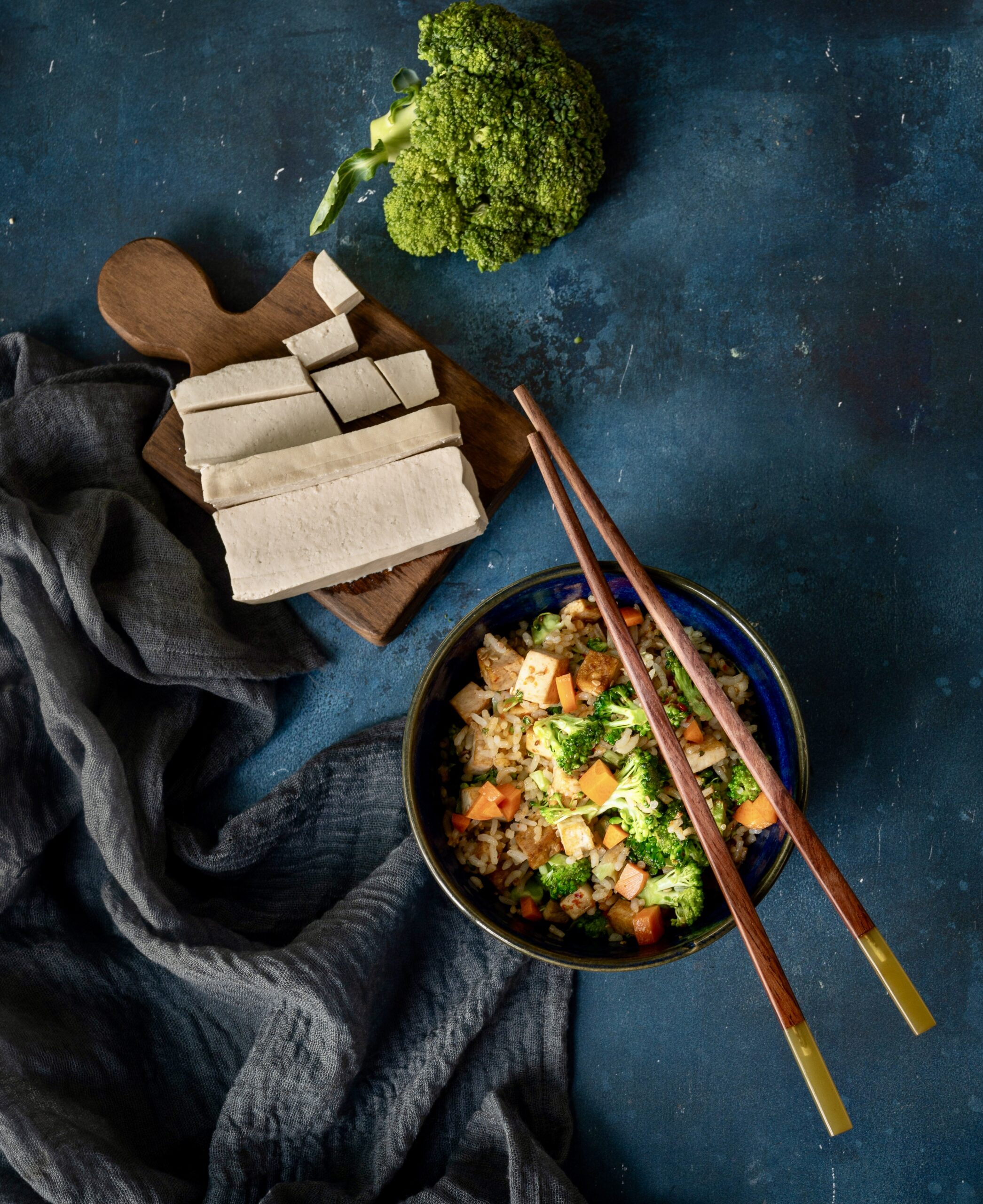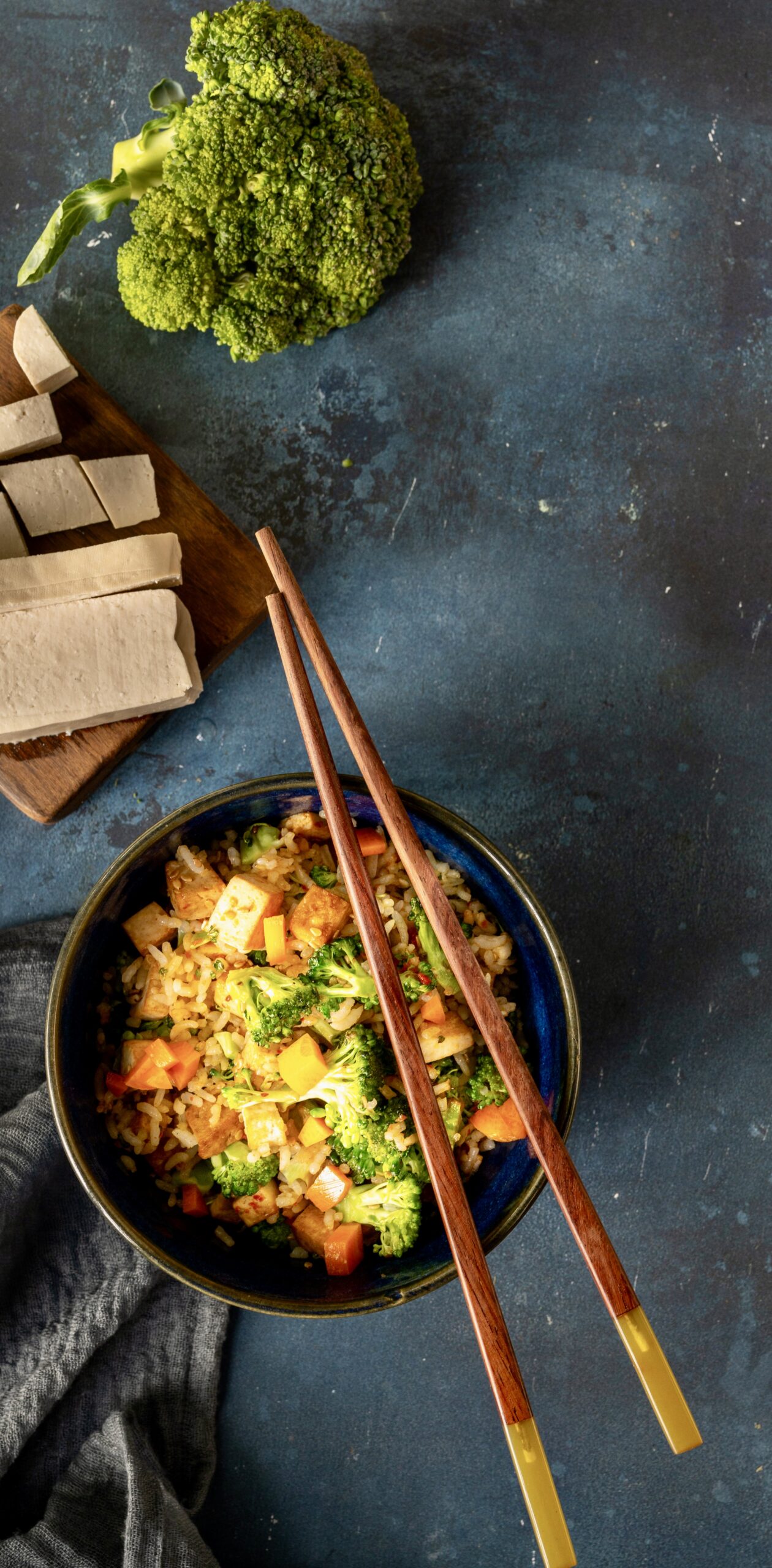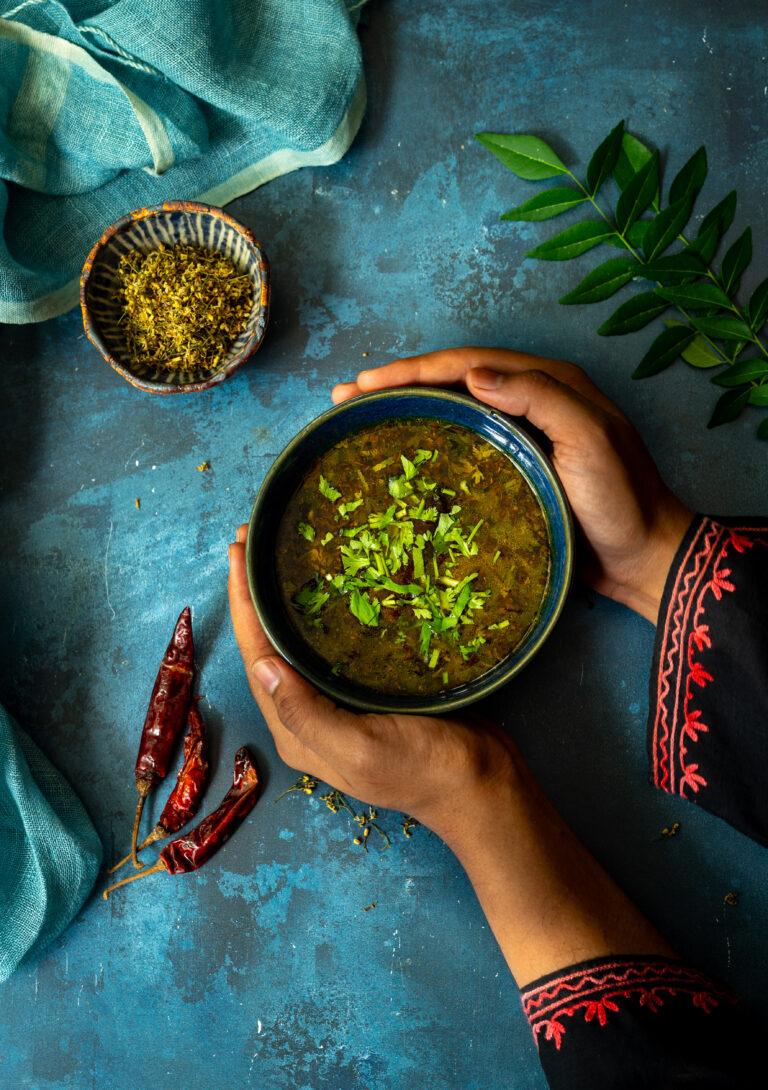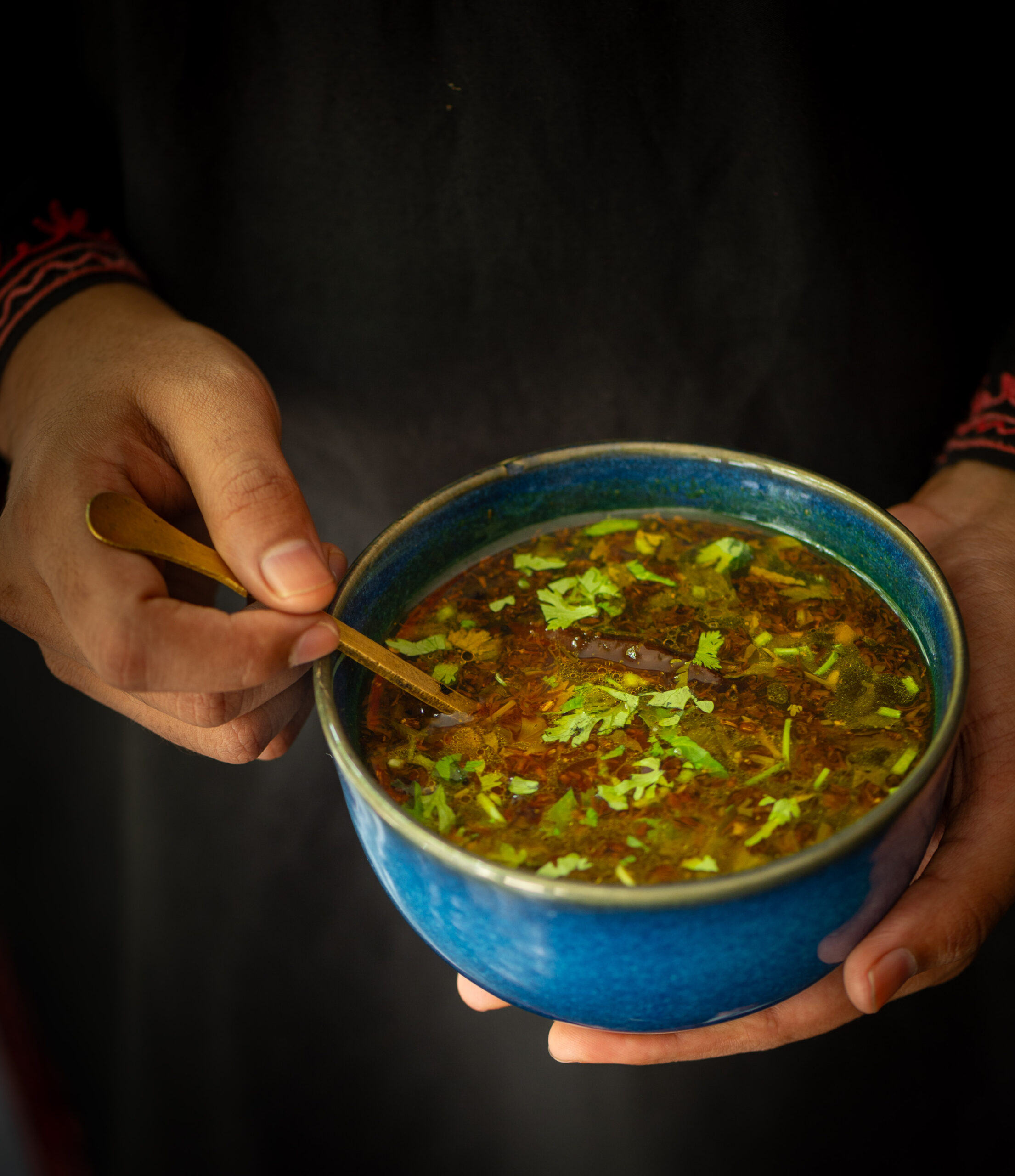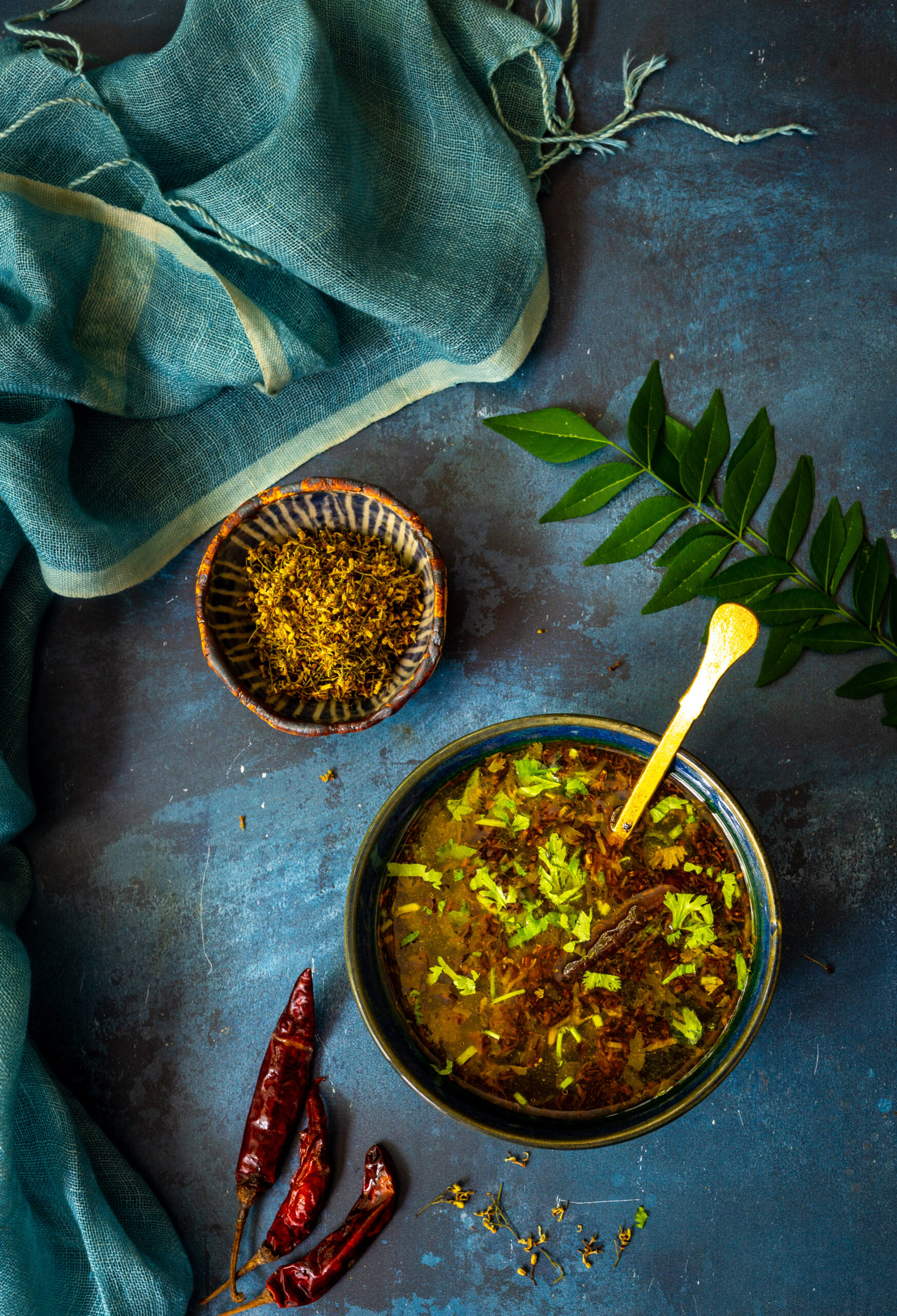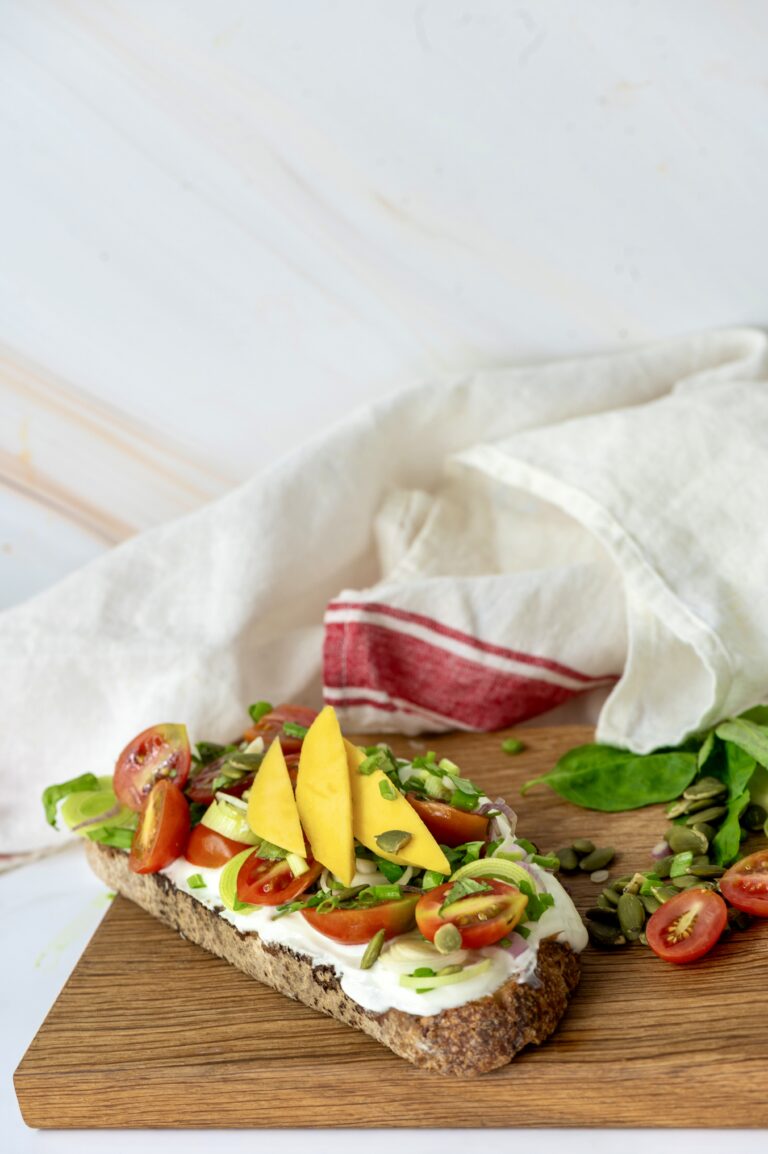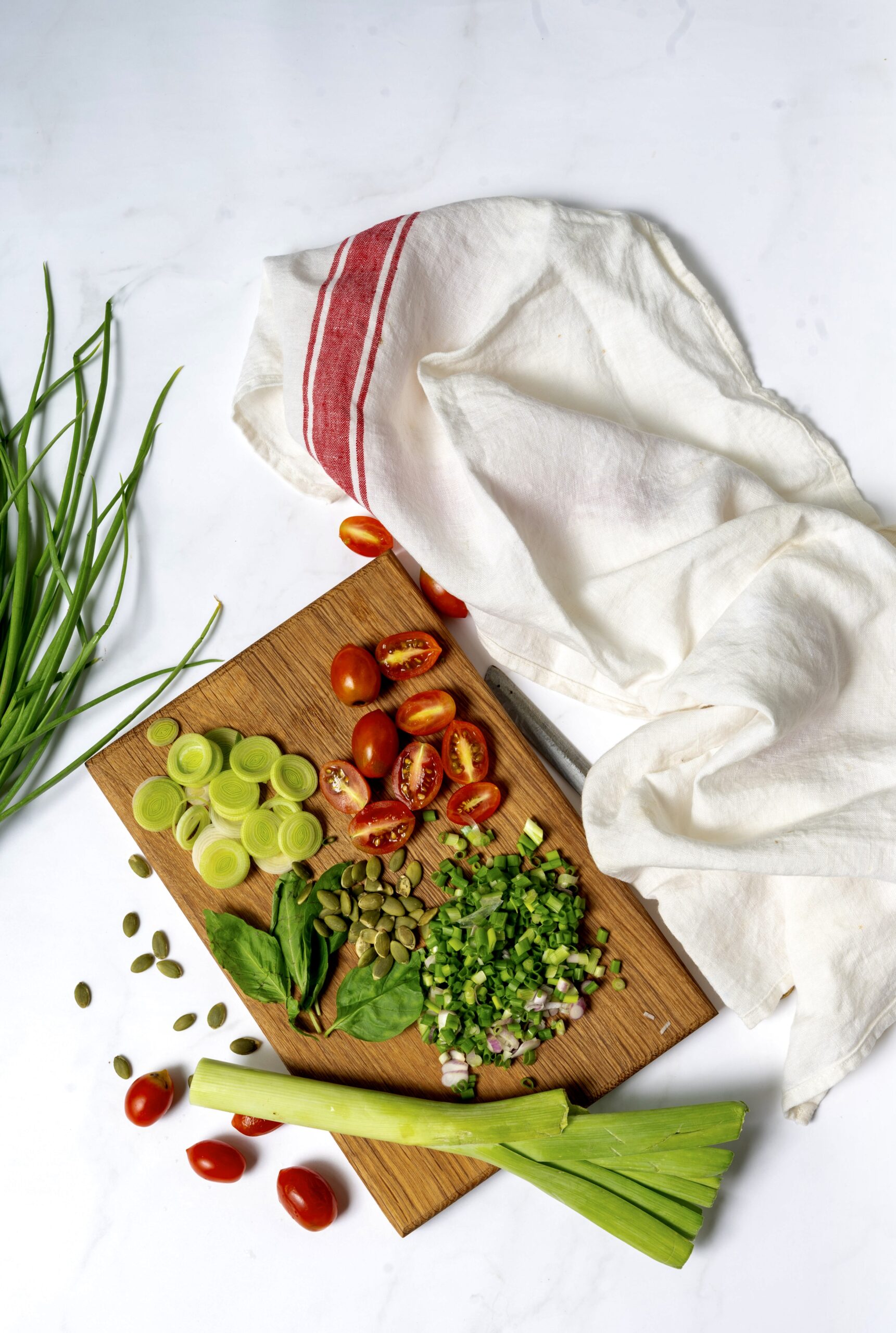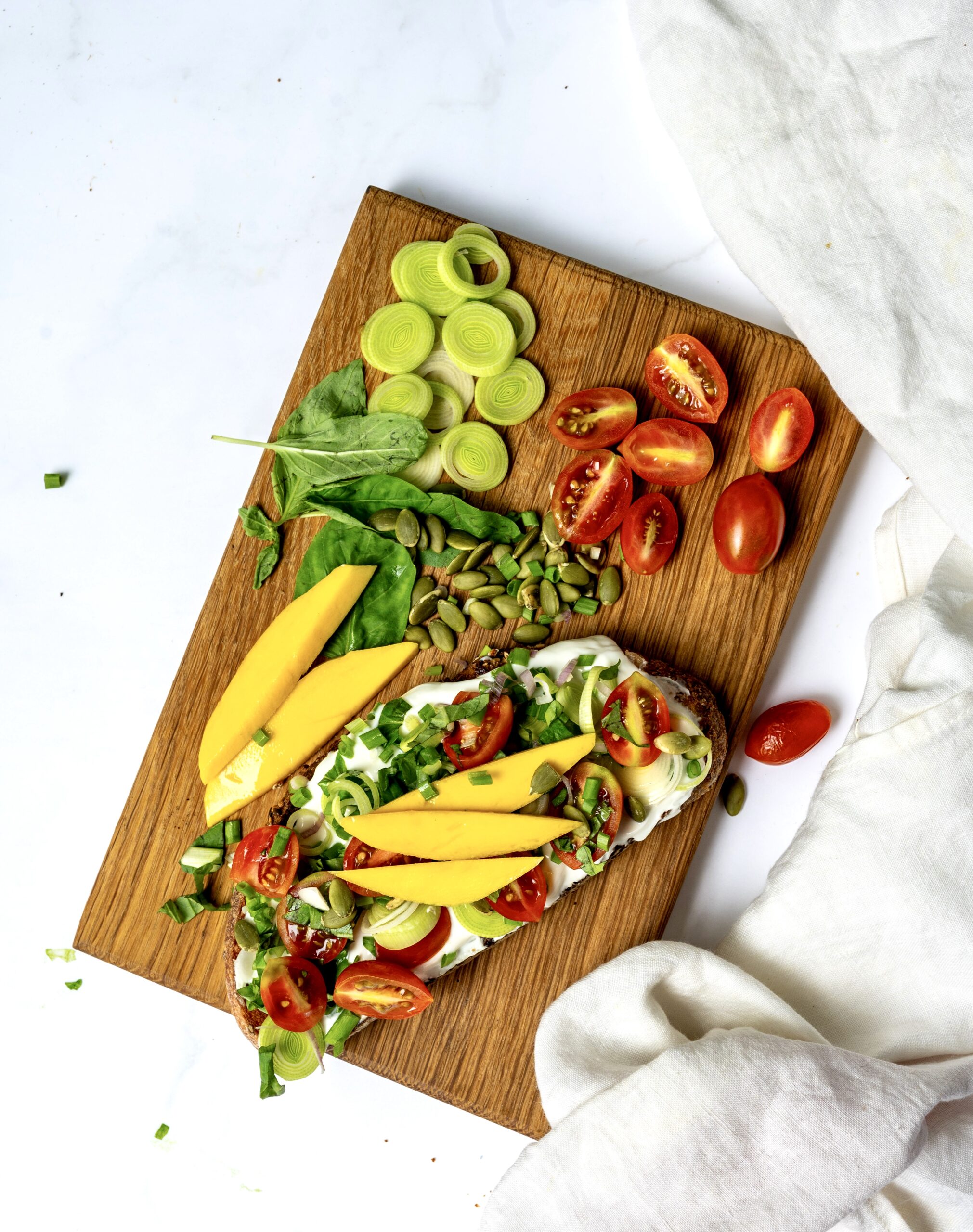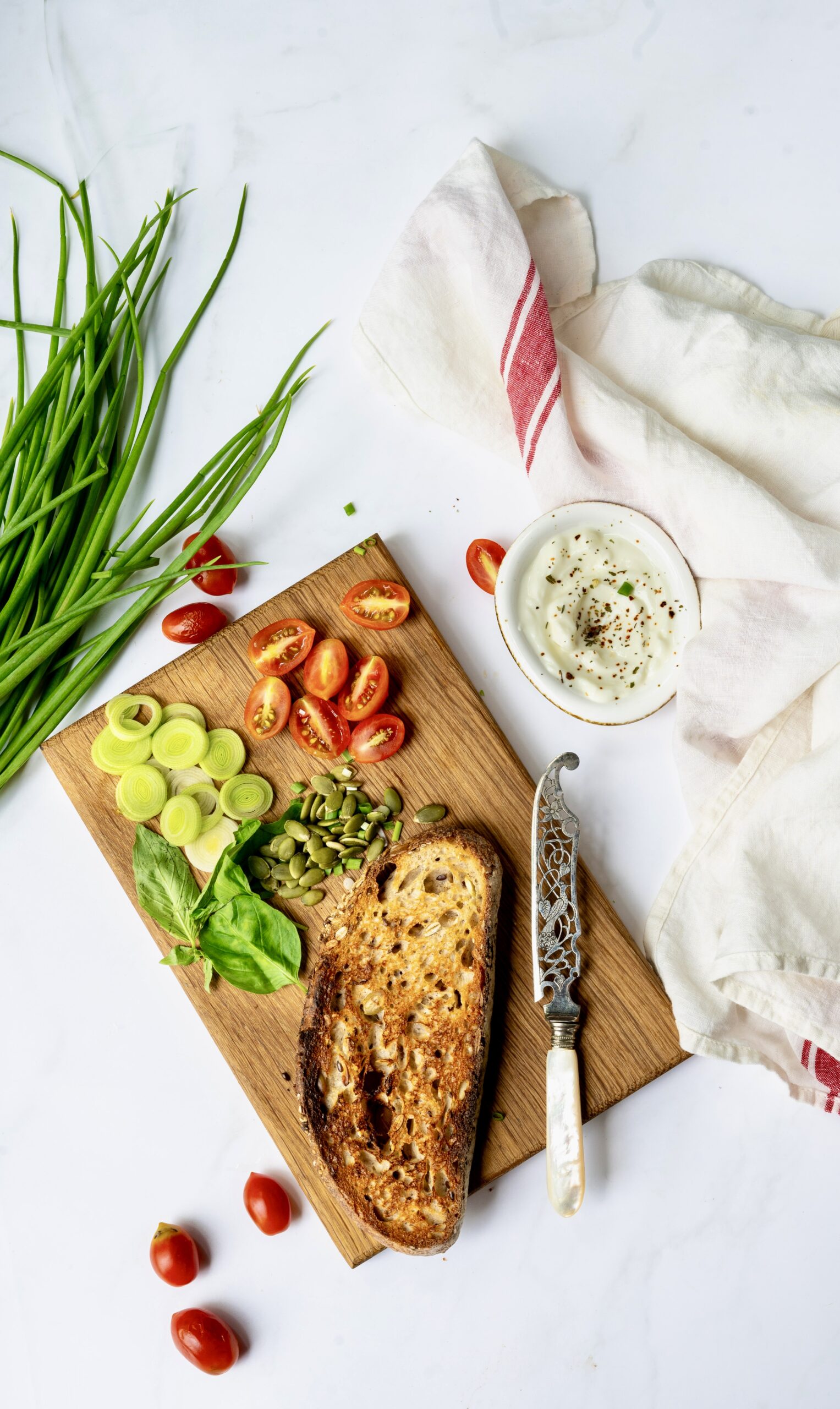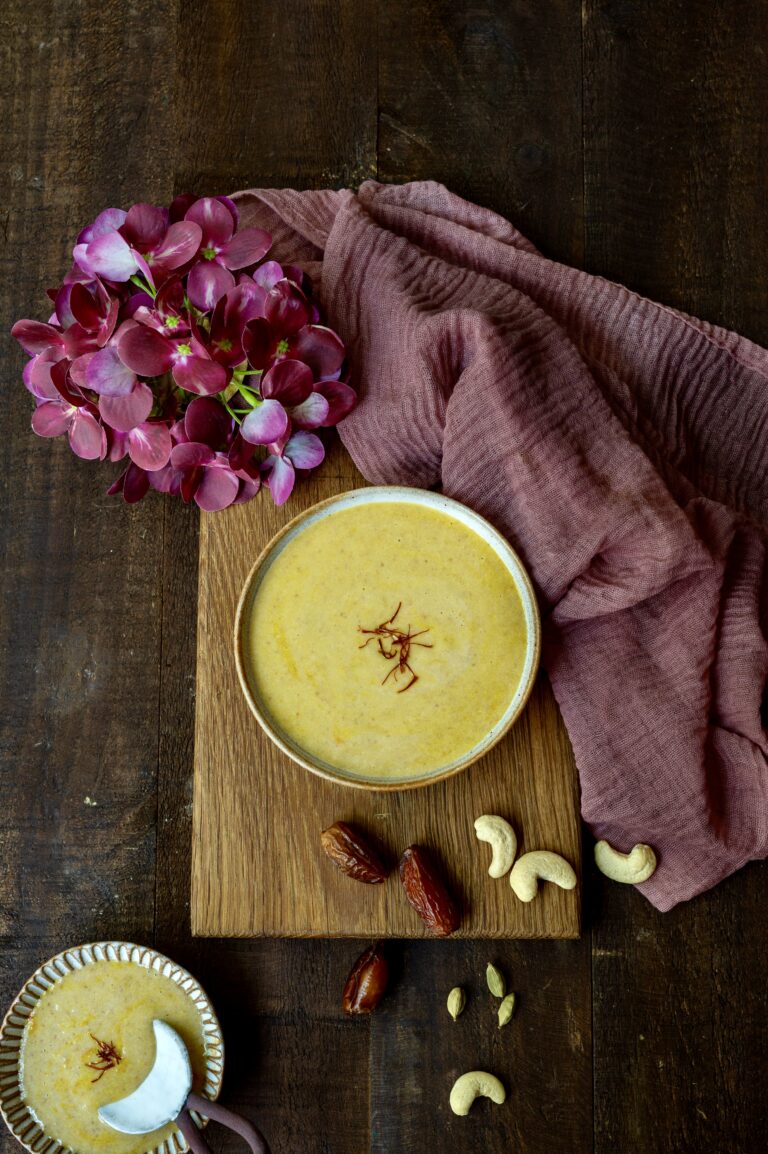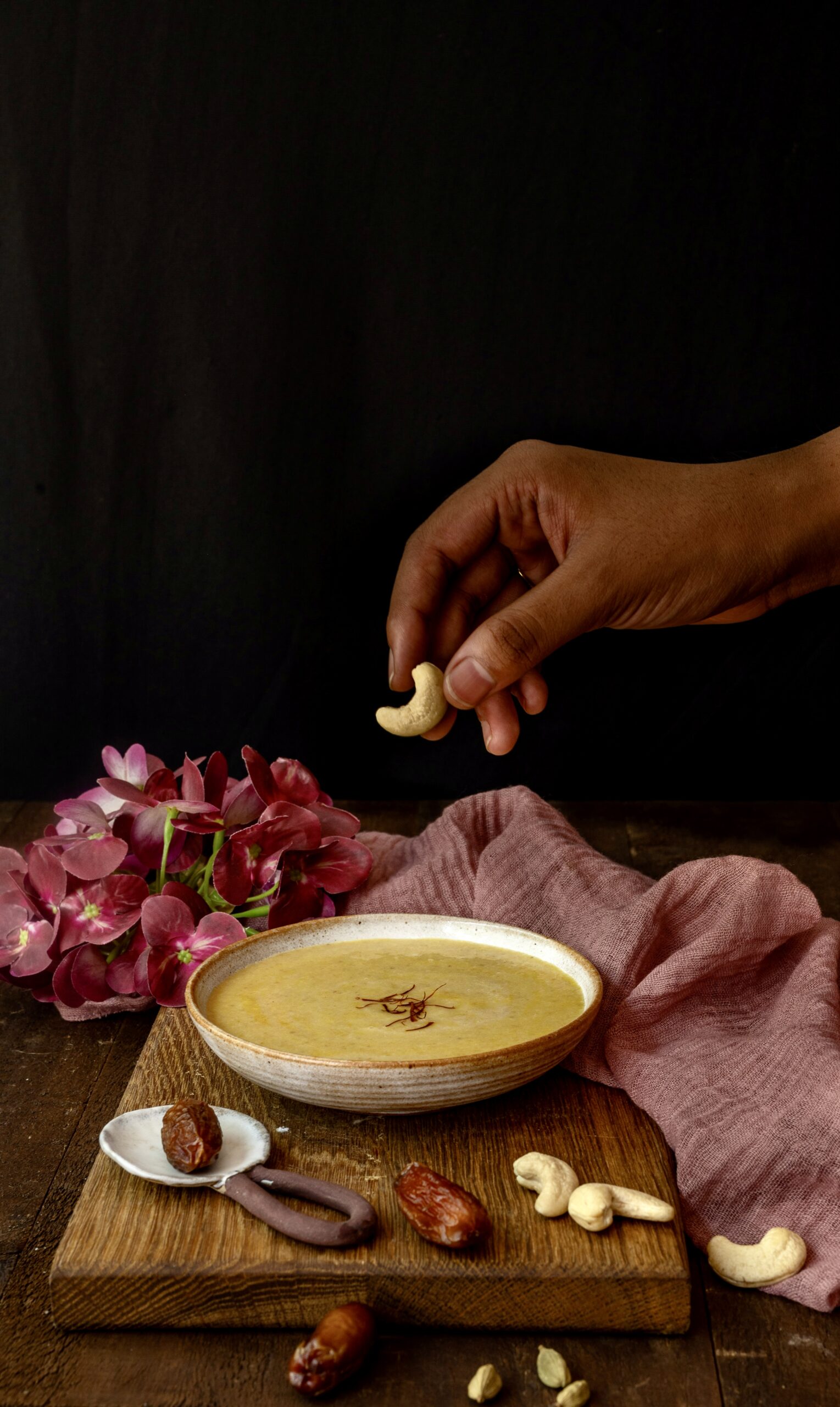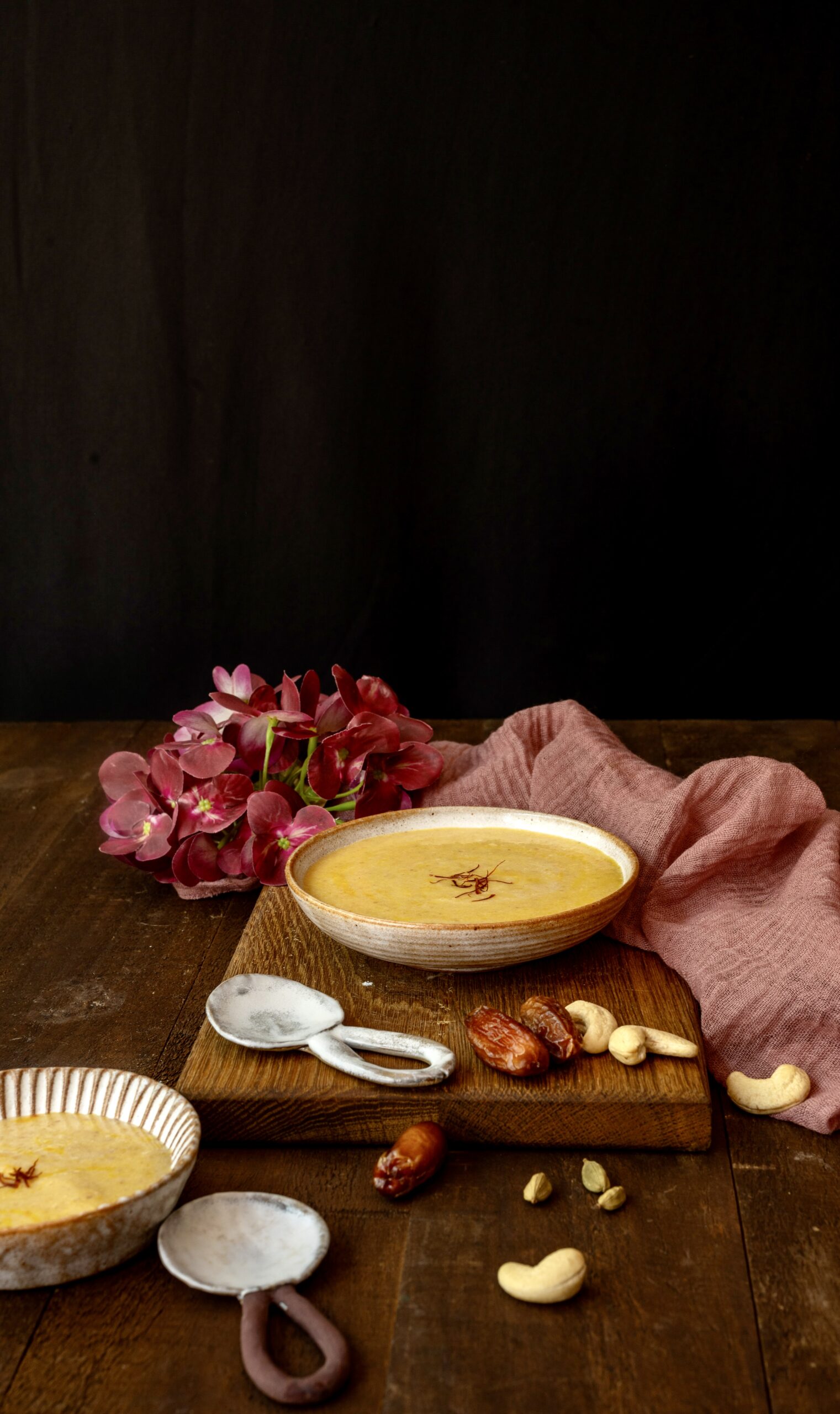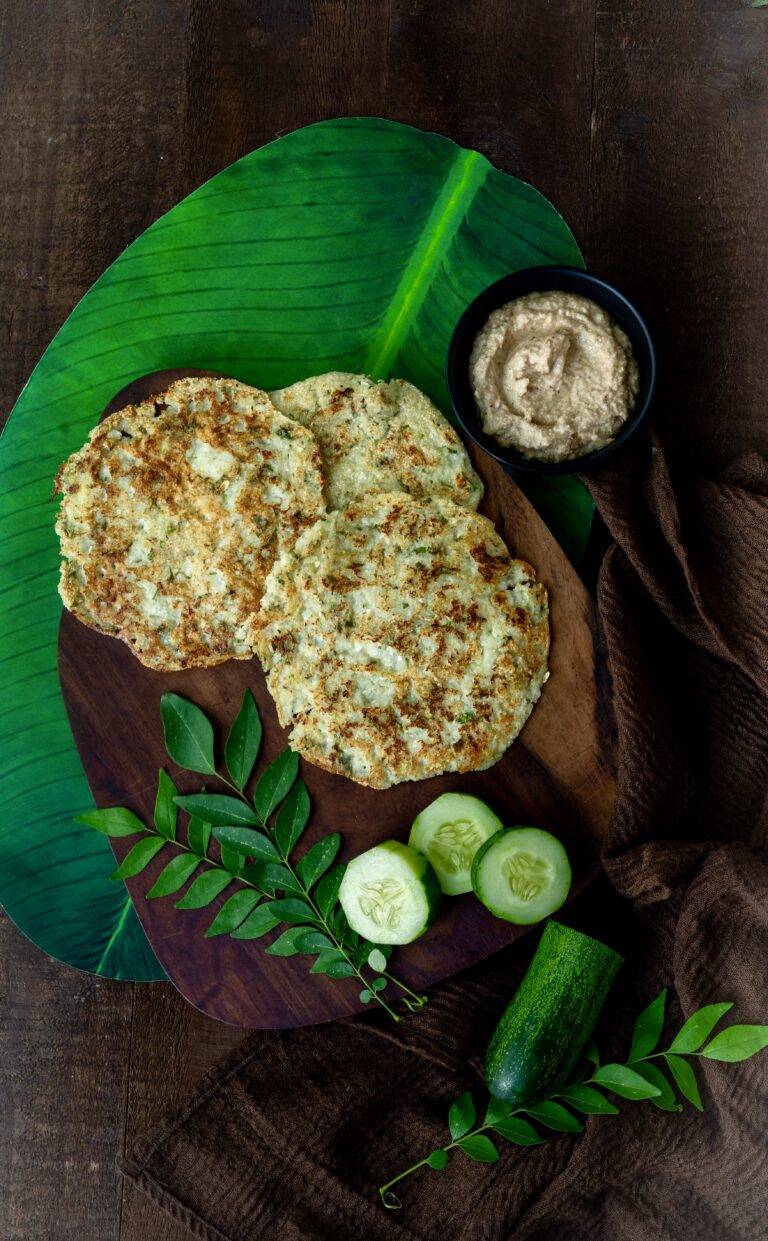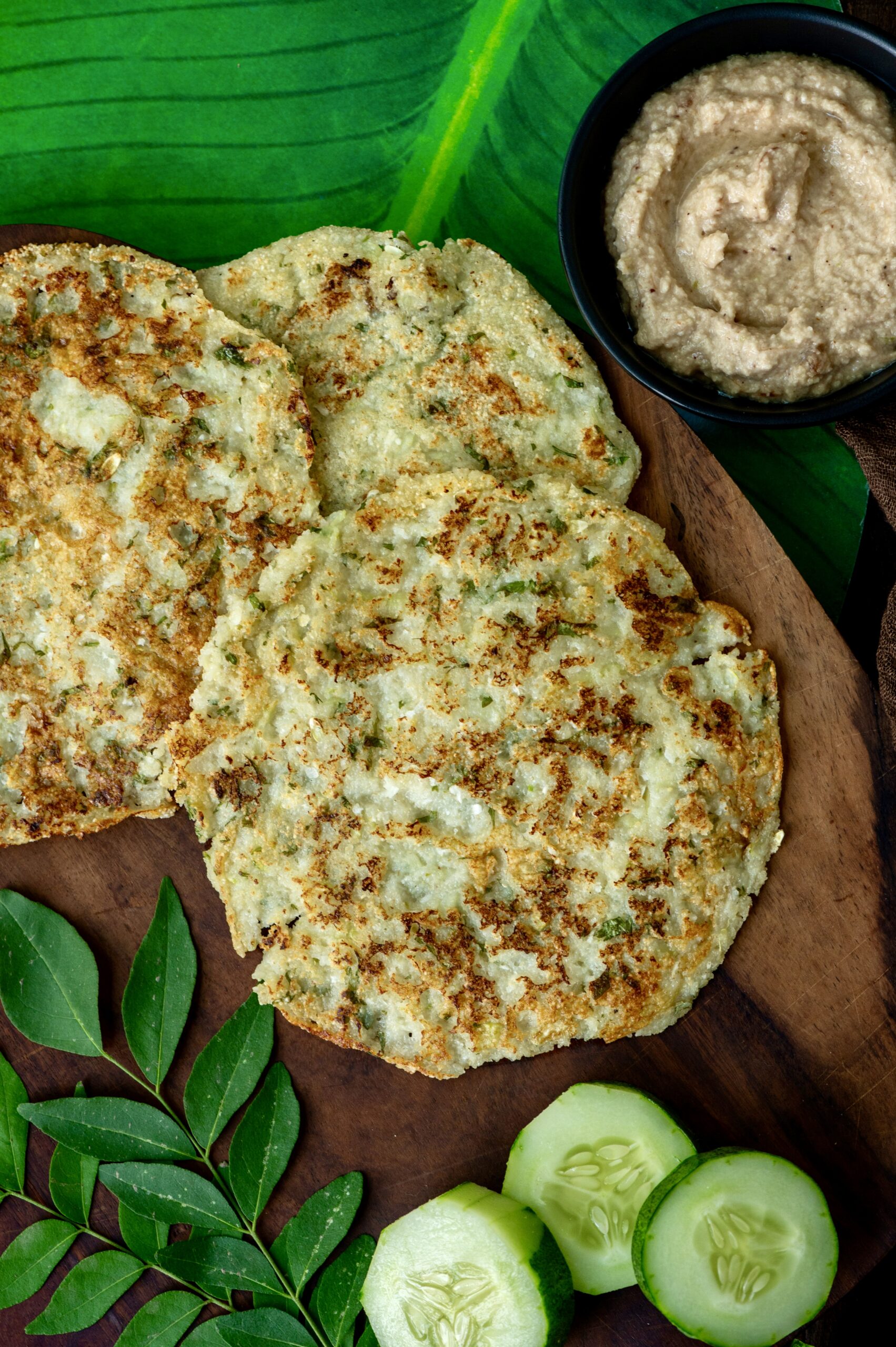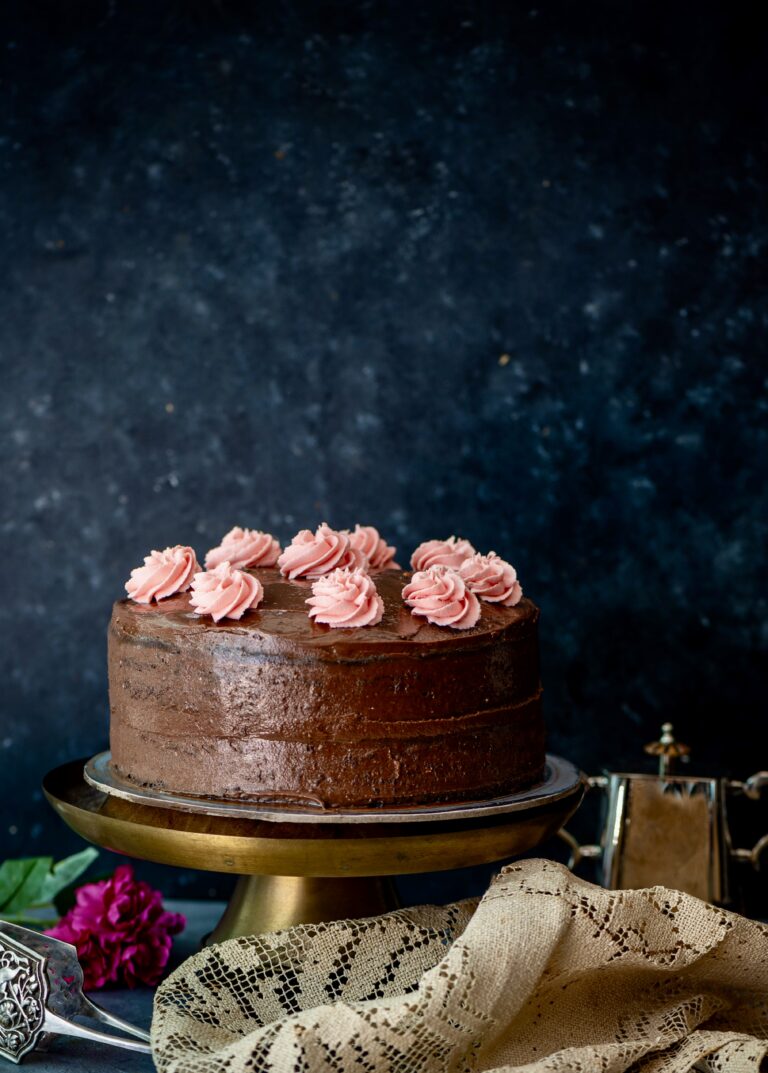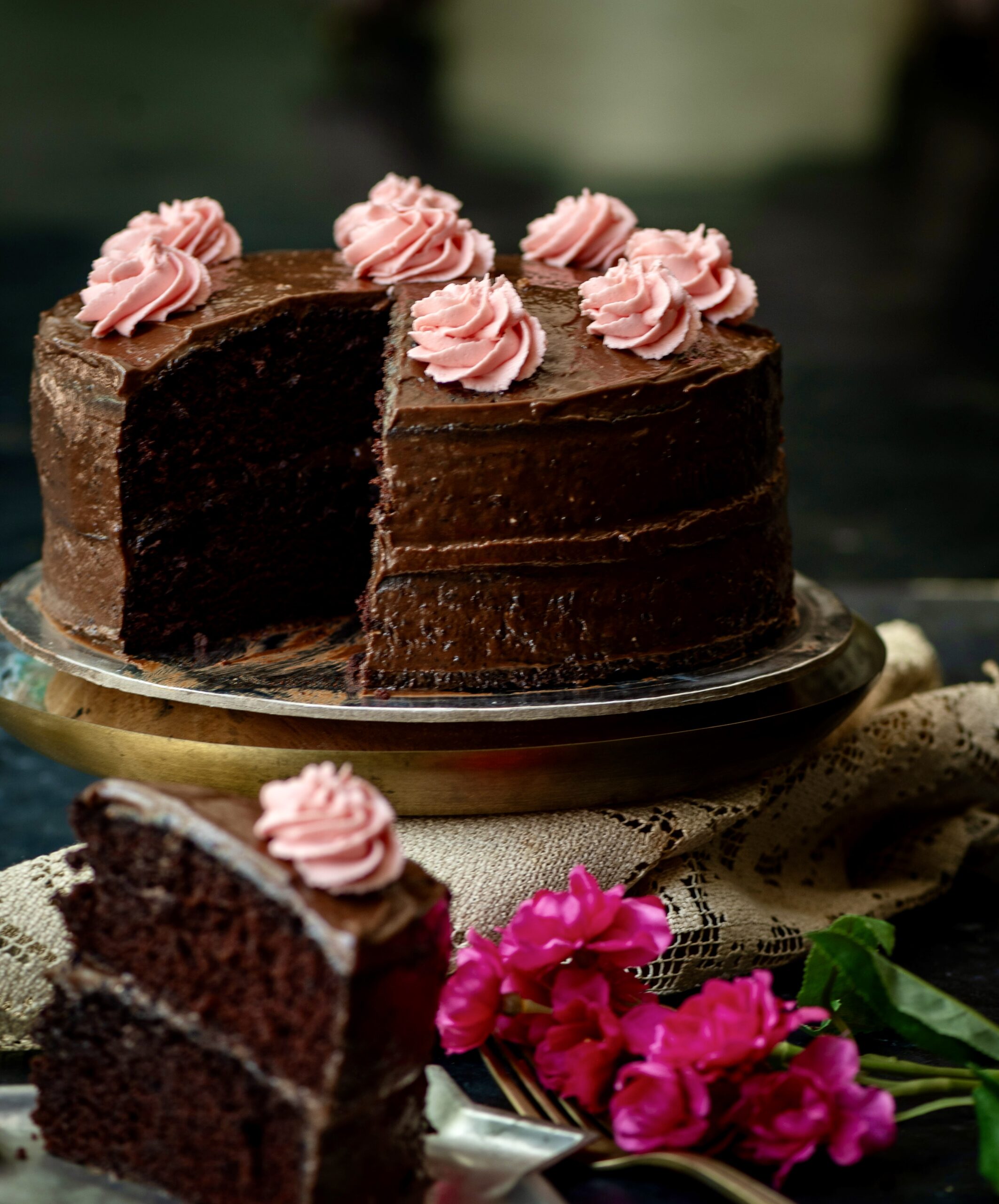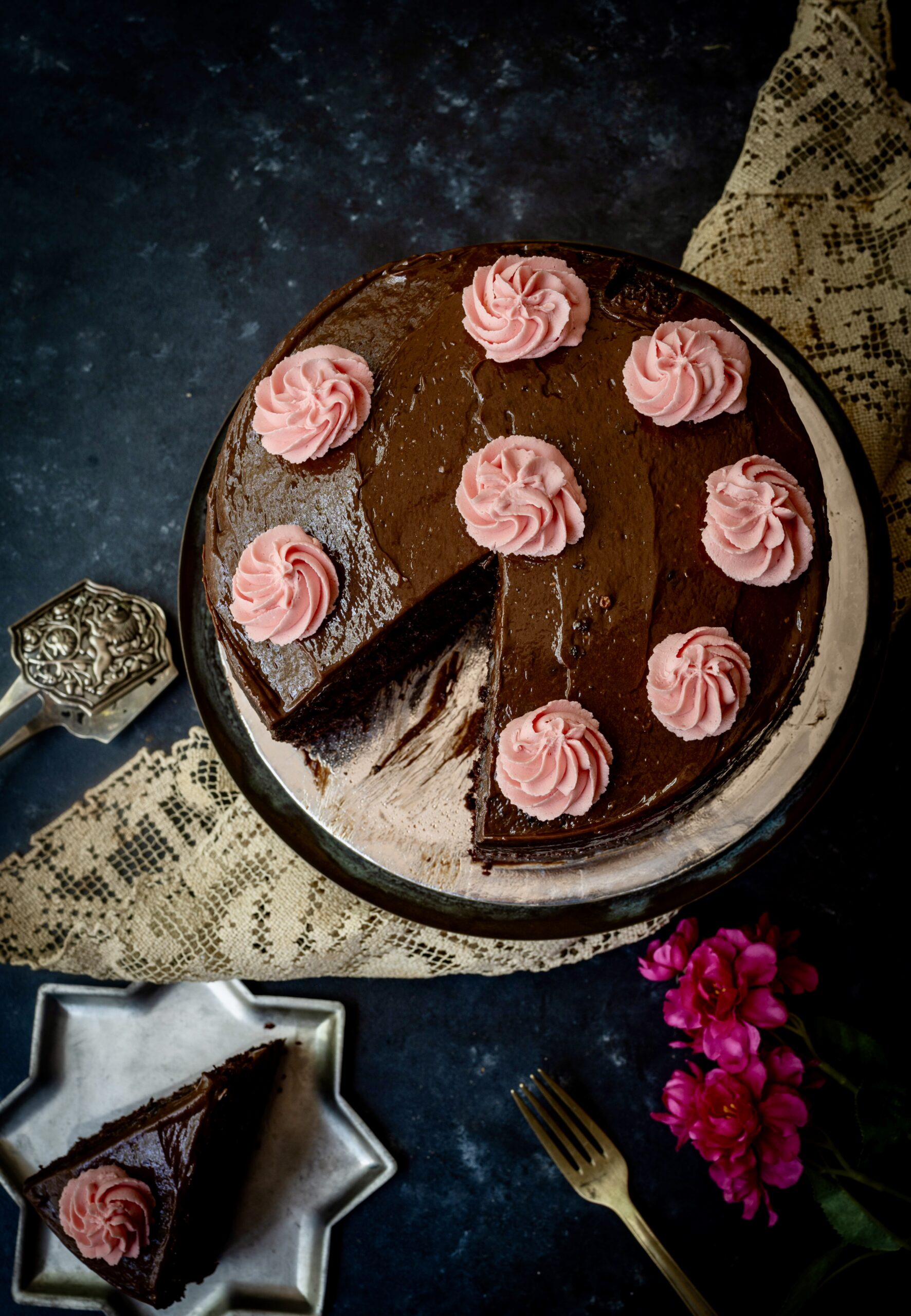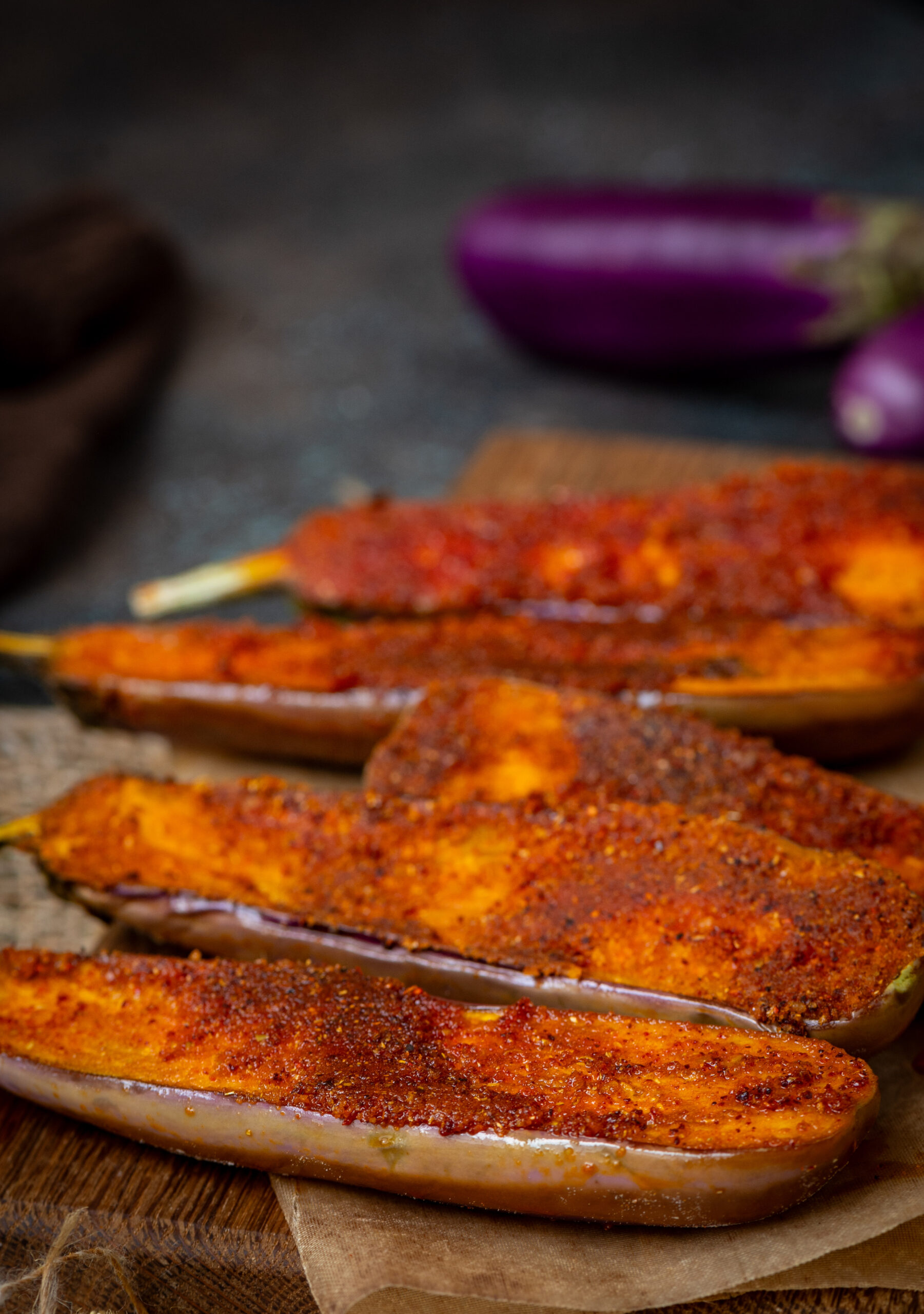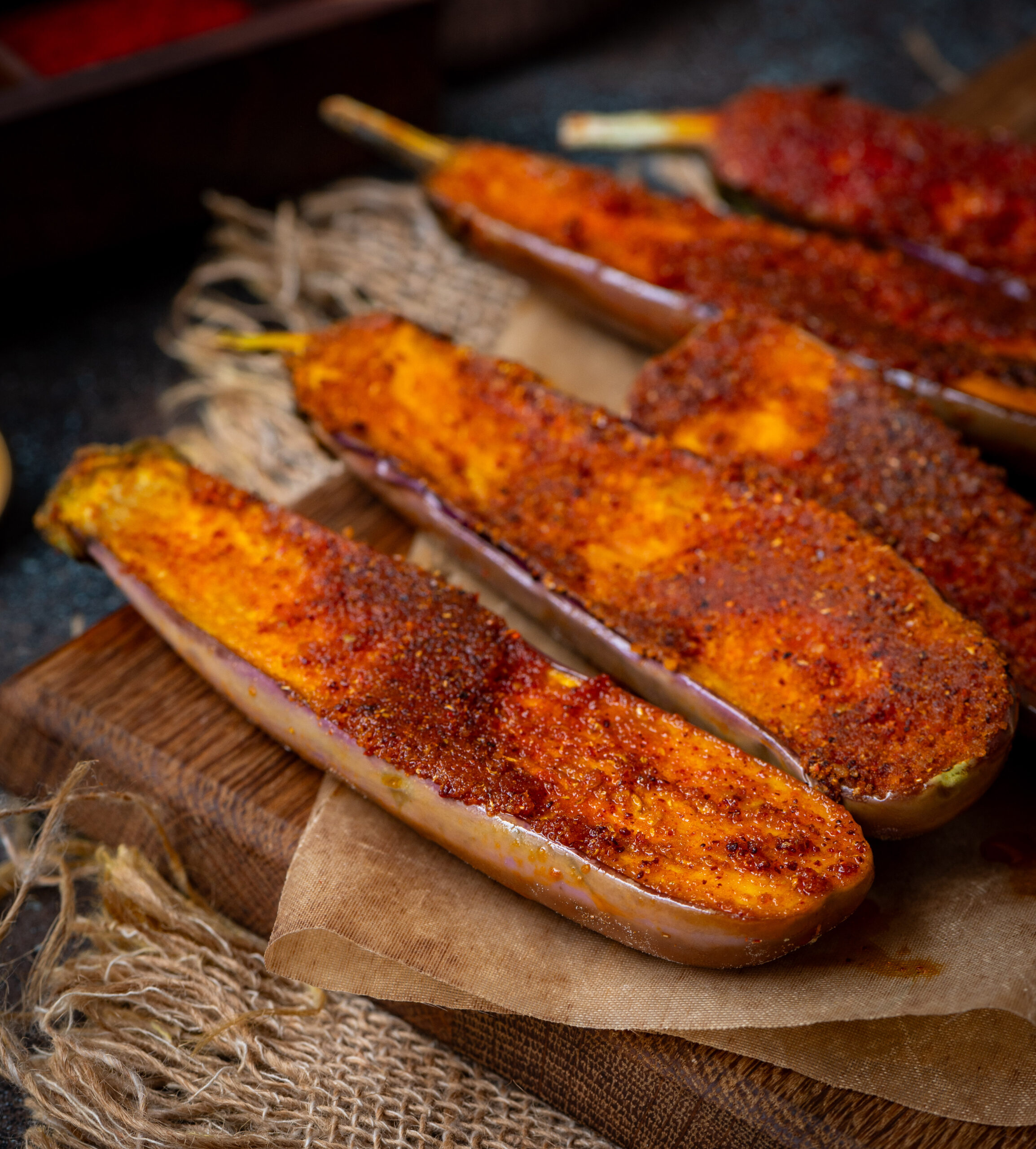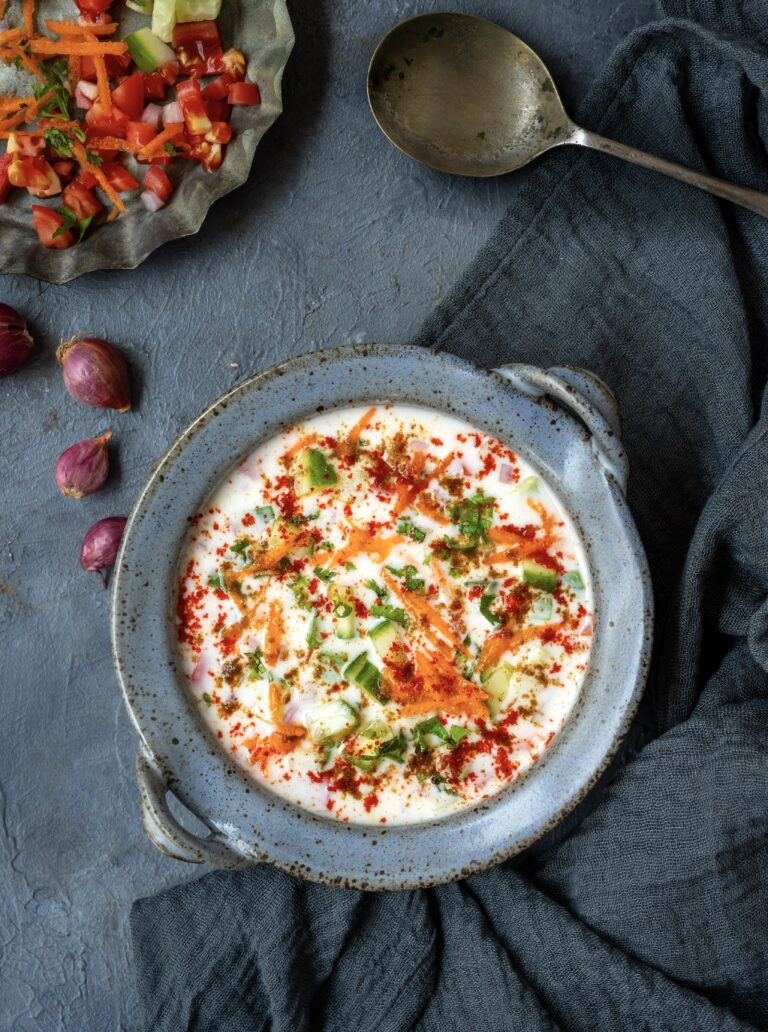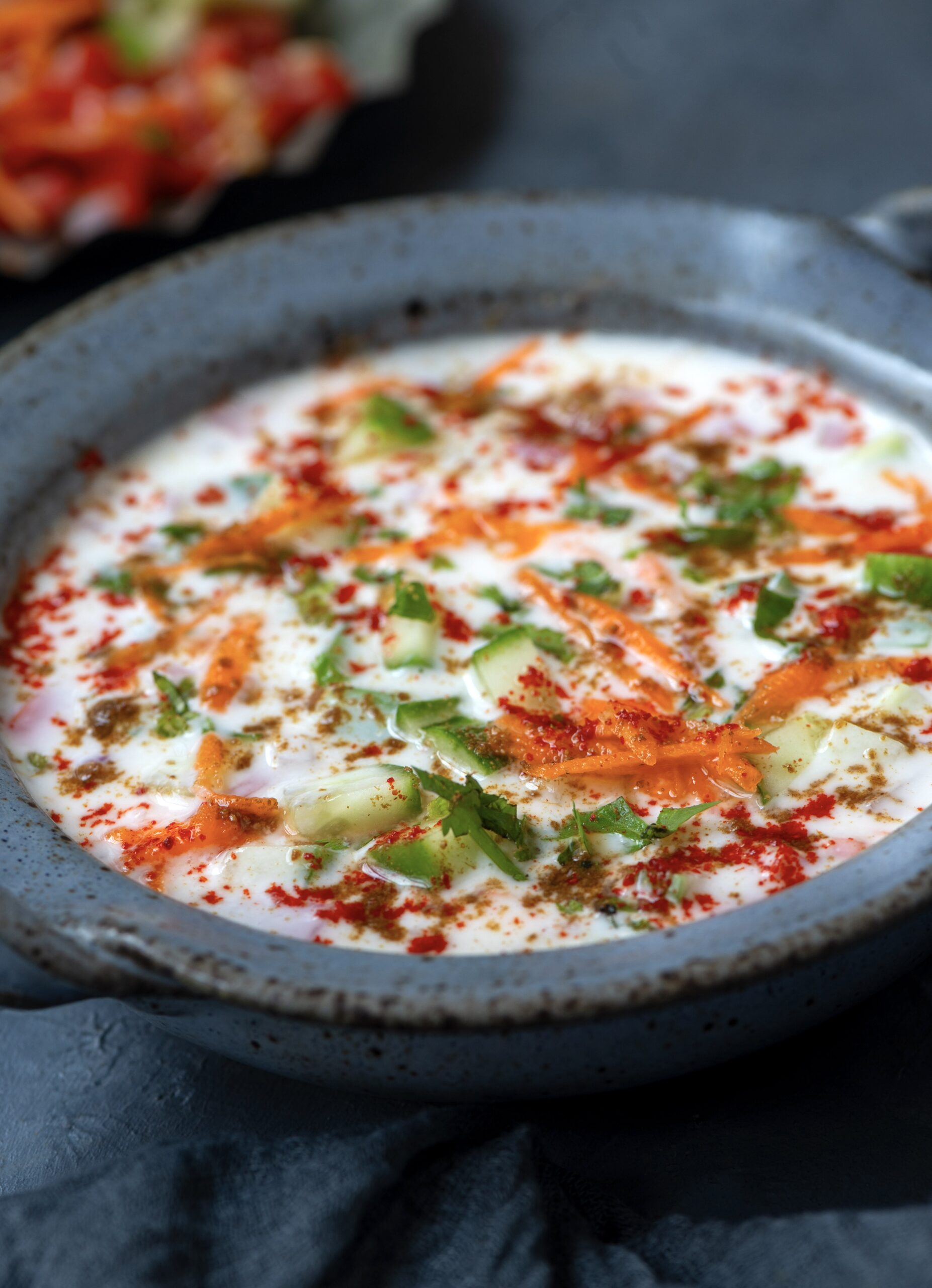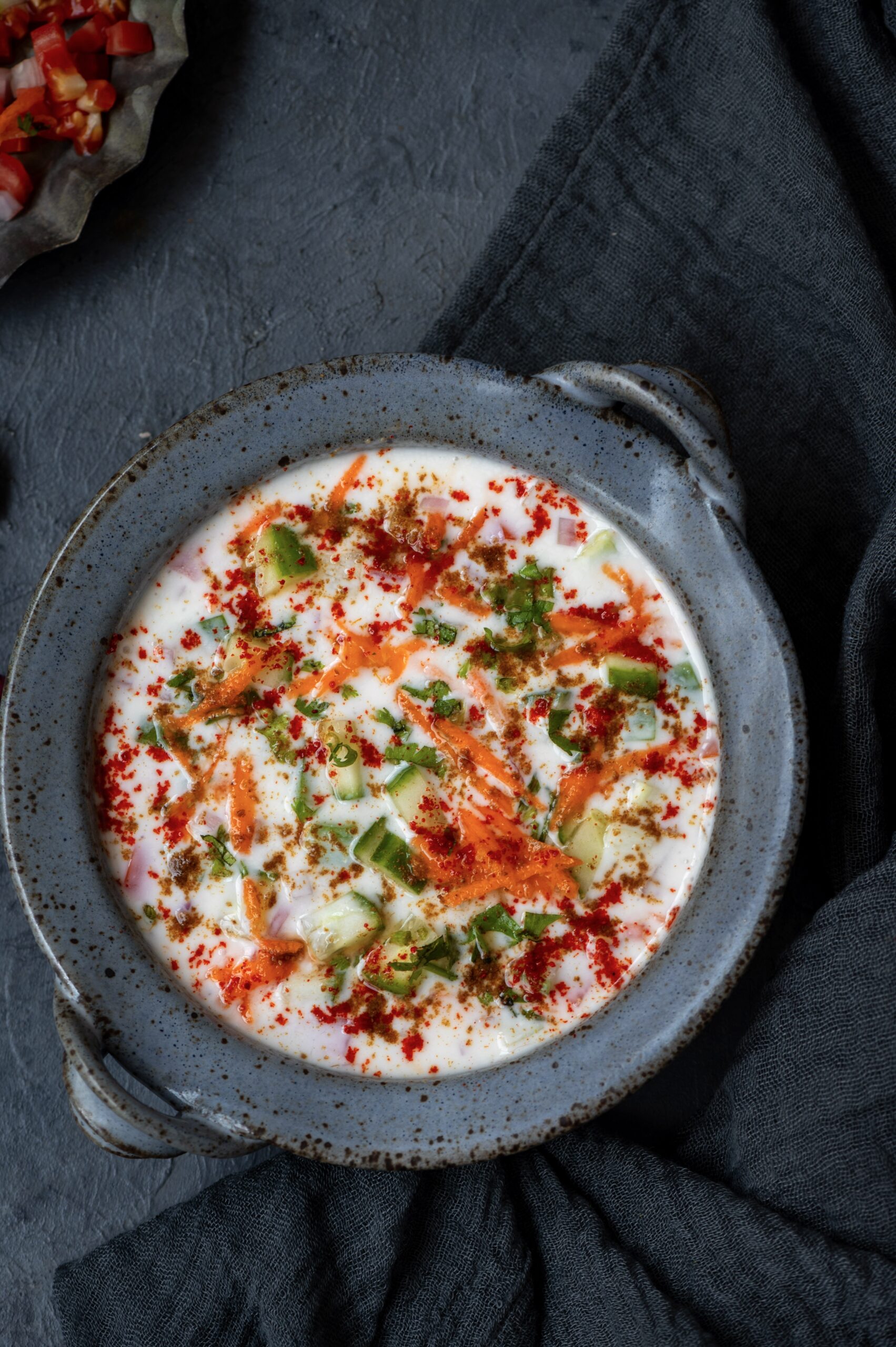The concept of pasta salads is pretty new to me. I had not imagined them as a possibility until I came across one while randomly scrolling online one day. I was intrigued, as I am always on the lookout for healthy recipes. The minimal pasta quotient used appealed to me, as it offered a way to get a tasty carb fix without making carbs the focus of the meal. In fact, portion sizes are what differentiate a pasta salad from a pasta with sides. A pasta salad will have a larger quantity of vegetables. Also, while pastas are ideally freshly prepared and served hot, a pasta salad works well at room temperature and even after a few hours or up to a day in the fridge.
So, inspired by the pasta salad as a concept, I set about putting together my own version. This one has mostly Mediterranean flavours, and brings together a delicious and nutritious combination of vegetables, nuts and carbs. It is a meal-in-a-bowl by itself, as the pasta makes it more filling than a standard salad might.
I used vegetables that were on hand in my kitchen, and chose ones that came together well. You could say the Mediterranean theme came after the vegetable selection, not beforehand. Apply this logic when you prepare your pasta salad too. You can mix and match and play around. By the way, the actual volume of pasta should probably be less than what you see in these photographs. Let’s just say it was a shoot day treat over here!
I decided to highlight the tomatoes while putting this dish together, which is why there are two kinds used: cherry tomatoes and sun-dried ones. Cherry tomatoes have lately become more popular in my local markets, and I was surprised to see them available in colourful varieties too. I have gone with the simple red ones, which pack a punch.
To me, the difference between a plain tomato and a tasty one is in the roasting. Whether you use regular-sized ones or the cherry kind, they simply burst with flavours upon roasting. Raw tomatoes just don’t impart the same deliciousness, at least not to me. This is true for a multitude of vegetables, of course, so keep that in mind whenever preparing this type of salad. So, these cherry tomatoes have been blistered in oil so that their taste is much enhanced. Meanwhile, the sun-dried tomatoes add a certain tanginess to the overall bowl.
The basil pesto in this dish was homemade, and I have shared the recipe for this earlier so that you can use the same. It’s easy to make, and I really feel that there is a big difference versus store-bought ones in terms of taste, freshness and quality. There’s nothing like knowing exactly what you’ve put into an ingredient, a dish or a meal. This is especially true for the health-conscious and for those who want to cut down on compromises in food quality for themselves and their loved ones. If you’re not a pesto fan, you could use a different sauce that is more to your liking. Or you could even skip the pasta sauce and just go with seasoning, or take the aglio olio route.
I have used a bow-shaped pasta, which is quite pretty, but you can use almost any other kind. Spaghetti will not work in a salad, but you can take your pick otherwise. I find that a nice grating of Parmesan cheese brings it all together beautifully. I love its nutty flavour, which is quite unlike, say, cheddar. For me, it’s Parmesan or no cheese at all in a salad like this. Your preferences may differ, of course! Adapt accordingly. That’s something I say over and over when it comes to most recipes (with the exception of baking, which is more scientific).

Pasta Salad
(Serves 2)
2 cups uncooked pasta
¼ cup olive oil
Salt to taste
A pinch of pepper
8-10 walnuts
A few basil leaves
2-3 cups cherry tomatoes
2-3 cloves garlic
A handful of sundried tomatoes
1½ tablespoons pesto
In a tray, add the cherry tomatoes and garlic. Drizzle with olive oil and sprinkle salt. Bake or grill in the oven until the tomatoes blister.
Cook the pasta according to instructions. Set aside.
In a bowl, add the pasta, pesto, sundried tomatoes and walnuts. Finally, add the blistered tomatoes.
Stir gently and top with slivers of Parmesan cheese and basil leaves.
Serve at room temperature or chill in the fridge to have later. You could even make a bigger bowl of this pasta salad to eat over a couple of days. In fact, the first time I prepared it at home, it was such a hit that I was requested to repeat it the following day. That may well happen in your home, too – in which case, you could save yourself some time and just make a larger quantity!
During hot days, I sometimes find that my body needs to eat lighter. So while one meal will invariably be my traditional thaali, the other will usually be something different, like this pasta salad. It works perfectly for me, and I hope it will for you too!
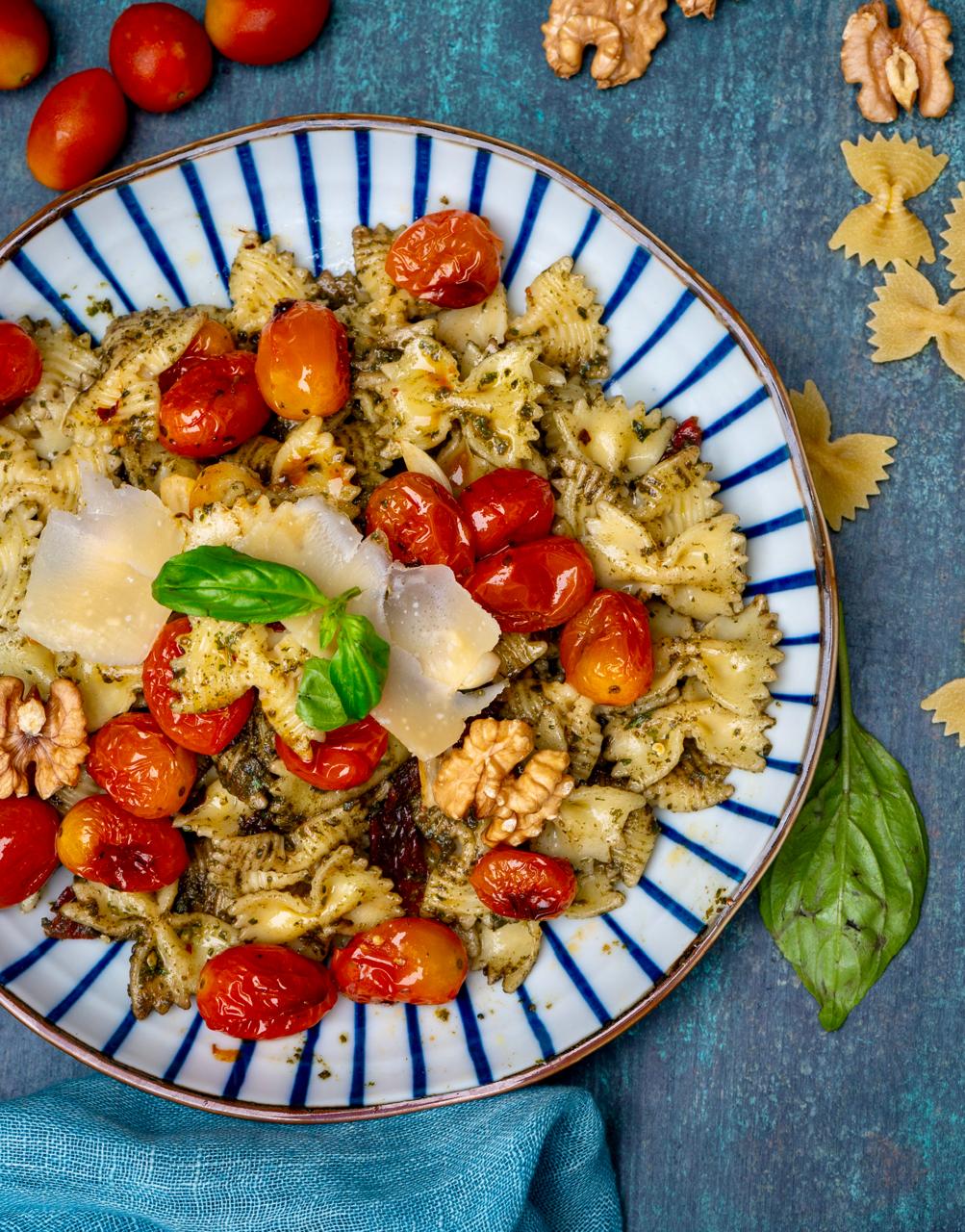
![]()


